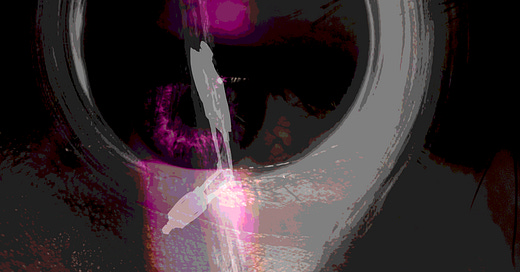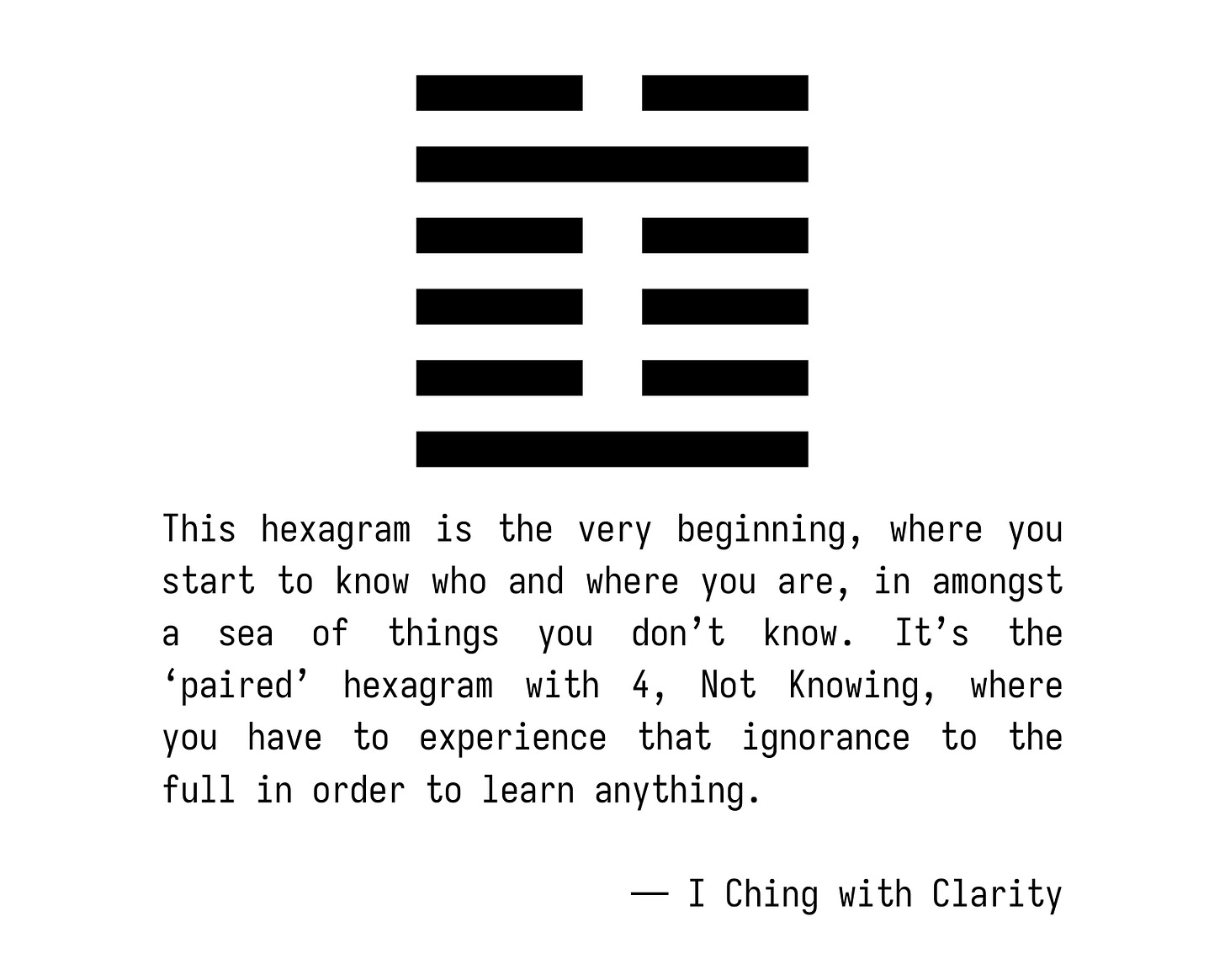Welcome, cosmic darlings, to another edition of Feed the Muse. This week we’re talking about beginnings and how you can become more familiar with the energy of beginnings. Which I hope helps you find more spaciousness in your own creative process.
We’ll begin (ha ha!) with a little chat, then play with a bit of breath work to anchor the ideas into they body.
The full transcript is available for all of you lovely readers.
Paid subscribers can listen to the transmission (above) & breathwork (below).
If you’re picking up what I’m putting down and would like to receive Feed the Muse (plus all my other goodies), consider becoming a paid subscriber and dive deep into the dark matter of creative energy with us each week
To begin any creative project, or any project at all — just to begin the day — we have to begin.
That might sound obvious, and it is, yet beginning is something that, maybe, because it's so inherent to every moment of life, we don't think about that often.
The third hexagram of the I Ching is Difficulty at the Beginning.
And I know you know that often opening a blank document or having a blank canvas in front of you is one of the most difficult parts of the creative process, stepping into that space of possibility. And it's this threshold of sorts.
We can open the document or not, we can start typing or not, we can start painting or not.
We can gather our materials or not, and that's a choice we have to make. As a creative person, you're always making choices.
Now, we could get into the idea that, well, are you really making choices?
How do you know what you're going to do next?
How do you quantify a choice that you make versus something that happens?
This is happening to me versus happening through me.
I'm making it happen. It's happening.
We could get into that and maybe a little later we will.
But for now, I just want to briefly talk about…
how we can set up our lives to make it a little bit easier to begin.
And this has so much to do with environment and knowing how we process information.
In order to embark on a project, we need to be able to focus. And I'm sure you know, a big part of our focus is our environment, internal and external, yes, but they affect each other. Now, there's a lot of discussion about your external environment emanating from your internal, but you can also affect your internal environment through your external environment.
If you're in a cluttered space, your brain might feel cluttered. On the other hand, you might really enjoy that clutter.
You might like having a lot of different things to look at and stimulate your mind, and that might excite you in ways that are useful.
So what I'm not saying here is that there is a right or wrong way to go about this environment, but that it's important for you to pay attention to what works for you.
• Do you like working with music, or no music?
• Do you like working by a window, or without the distraction of what's out the window?
• Do you like bright light or dim light?
• Do you like candles or incense or do you like no smells.
So there are all of these different kinds of sensual factors that we can factor into creating an environment that makes it easier for us to begin.
This leads directly into information and how we are digesting it, so to speak.
Everything that we are in contact with is information
The colors are information, the sounds are information, the textures are information, the smells are information.
So the kind of balance we're always playing with is what is the correct amount, type, volume of information that we need at any given point to achieve what we're trying to achieve. If there's not enough information, maybe our attention just kind of floats off and we can't focus on anything.
If there's too much information, the same thing can happen, we can get really scattered.
So this is kind of an experiment in just noticing: how does your brain and your mind respond to different amounts and different types of information within your environment.
When you start to play with these two things, starting actually with the external, you then can start to affect the internal and that is something that can be really fun to incorporate into your creative practice.
You might find a rhythm that works really well for a long time.
It might change over time.
I don't know — this is all your experiment.
What I can say from personal experience is that there's a basic structure that works. And then there are these little variables within it that I can play with and shift in order to affect the outcome, depending on if I want to affect the outcome or if I simply want to channel what's in my atmosphere right now.
So, am I just wanting to express the pure emotion, the pure information that I am receiving? Or am I wanting to shape it in a particular way?
And those are different practices which we will play with further on in this journey.
But for now, I just wanted to give a little insight into how we can support ourselves through our environments and the way that our brain works with information.
Because once we've kind of gotten down a nice rhythm, once we've gotten familiar with how our brain needs to be supported through our environment, then our mind can start to kind of see what it was meant to see and see in the ways it was meant to see. And that flow that we're all kind of wanting to be able to access, that creative flow, becomes more accessible, more often, and in more ways.
So that is it for this portion and next we're going to do a little bit of breath work.







